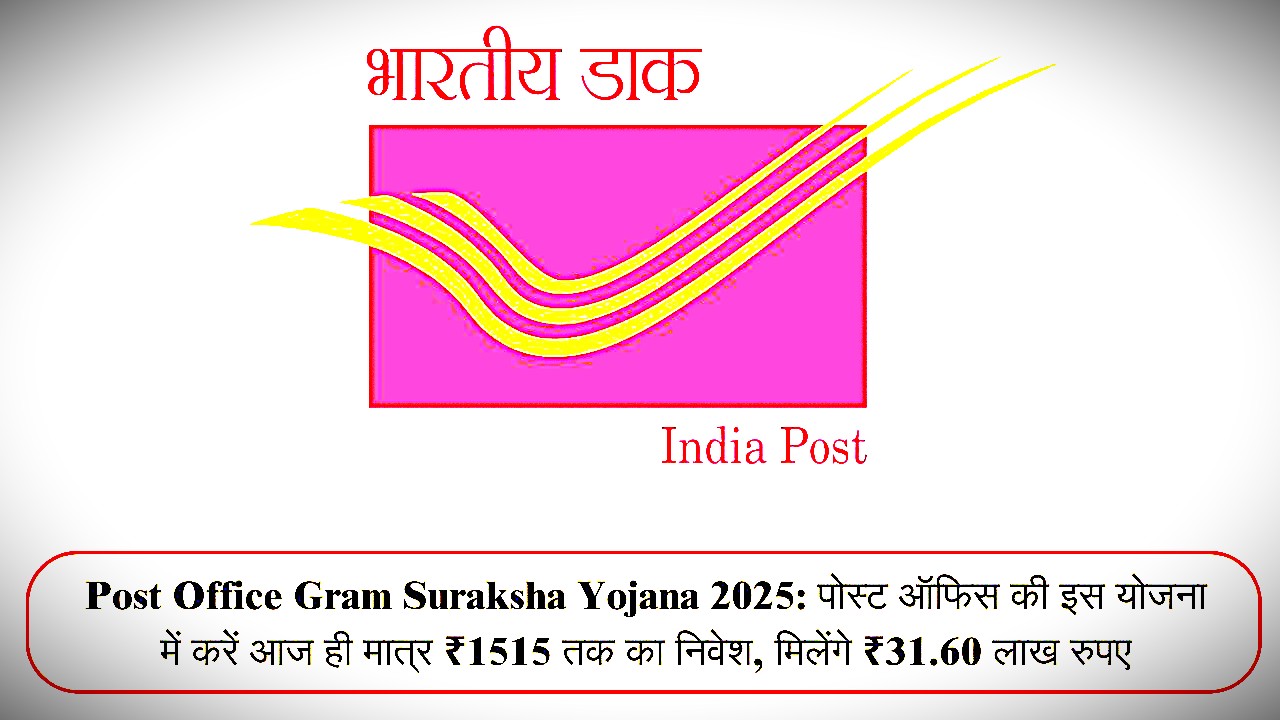The Post Office Time Deposit (POTD) Scheme is widely regarded as one of the safest and most dependable investment options for conservative investors in India. Backed by the Government of India, it offers capital protection along with assured returns, making it an ideal choice for those who prioritize security over high-risk, high-return investments.
One of the most appealing aspects of the POTD Scheme is its fixed interest rate, which is revised quarterly by the Ministry of Finance. As of the January–March 2025 quarter, the scheme offers interest rates ranging from 6.9% to 7.5%, depending on the chosen tenure. Investors can opt for 1-year, 2-year, 3-year, or 5-year deposit terms, providing flexibility according to individual financial goals.
The scheme also offers notable tax benefits. Specifically, the 5-year deposit qualifies for deductions under Section 80C of the Income Tax Act, up to ₹1.5 lakh per year. This adds to the appeal for salaried and middle-income individuals looking to save on taxes while earning decent returns.
With no upper limit on investment and the ease of account opening through any post office branch, the POTD scheme continues to be a preferred savings instrument for retirees, salaried professionals, and those seeking low-risk investment options in 2025
Interest Rates for January–March 2025:
As per the latest announcement by the Ministry of Finance, the interest rates for the Post Office Time Deposit Scheme for the quarter starting January 1, 2025, are as follows.
- 1 Year – 6.9%
- 2 Years – 7.0%
- 3 Years – 7.1%
- 5 Years – 7.5%
These rates are applicable for the quarter ending March 31, 2025, and are subject to review thereafter.
Key Features of the POTD Scheme:
- Minimum Investment: ₹1,000, with subsequent deposits in multiples of ₹100.
- Maximum Investment: No upper limit.
- Tenure Options: 1, 2, 3, or 5 years.
- Interest Payment: Quarterly compounding with annual payouts.
- Account Types: Individual, joint (up to 3 members), and guardian-minor accounts.
- Tax Benefits: The 5-year deposit qualifies for tax deductions under Section 80C of the Income Tax Act, 1961, up to ₹1.5 lakh
Withdrawal & Extension Rules:
Premature Withdrawal: Allowed after 6 months. If closed after 6 months but before 1 year, the interest rate applicable will be that of a Post Office Savings Account (currently 4%). If closed after 1 year but before the maturity period, the interest rate will be reduced by 2% from the original rate.
Account Extension: Depositors can extend their time deposit account after maturity by submitting an application form and the passbook at the respective post office. The interest rate applicable on the day of maturity will apply to the extended period.
Taxation Details:
- Interest Taxability: Interest earned is taxable and added to the depositor’s annual income.
- TDS Applicability: No Tax Deducted at Source (TDS) is applicable. However, if the interest income exceeds the taxable limit, it is subject to tax as per the individual’s income tax slab.
- Tax Deduction under Section 80C: Only the 5-year time deposit qualifies for tax deductions under Section 80C, up to ₹1.5 lakh.
Who Should Invest?
The Post Office Time Deposit Scheme is ideal for:
- Conservative Investors: Those seeking guaranteed returns with minimal risk.
- Senior Citizens: Looking for a stable income stream.
- Tax-Savvy Investors: Wanting to avail of tax benefits under Section 80C.
- Individuals Without Bank Access: Those who prefer dealing with post offices.
How to Open an Account:
- Offline: Visit your nearest post office with a valid identity and address proof. Fill out the application form, submit the necessary documents, and make the initial deposit.
- Online: If you have an existing Post Office Savings Account with internet banking, you can open a Time Deposit account online through the India Post Internet Banking portal.
Final Thoughts:
The Post Office Time Deposit (POTD) Scheme stands out in 2025 as a secure and reliable investment option, especially suited for risk-averse investors. Backed by the Government of India, it ensures capital safety while offering steady and attractive returns. Interest rates range from 6.9% to 7.5% based on the deposit tenure, which can be 1, 2, 3, or 5 years, providing investors with flexible options tailored to their financial goals.
A key advantage of the scheme is its tax-saving benefit, particularly for the 5-year deposit, which qualifies for deductions under Section 80C of the Income Tax Act, allowing individuals to save up to ₹1.5 lakh annually in taxes. Additionally, there is no upper limit on investment, and accounts can be opened easily at any post office.
Combining safety, moderate returns, and tax efficiency, the POTD Scheme continues to be a trusted and popular savings vehicle in 2025.















Technology
The Post Office Time Deposit Scheme seems like a solid option for those who prefer stability over high-risk investments. The fixed interest rates and government backing make it a trustworthy choice, especially for retirees or conservative investors. The tax benefits under Section 80C are a great incentive for middle-income earners looking to save while earning returns. However, I wonder if the interest rates are competitive enough compared to other low-risk options available in 2025. The flexibility in tenure and the ease of account opening are definite pluses, but what happens if the interest rates drop significantly in the future? Would it still be as attractive? Also, how does the premature withdrawal penalty affect long-term planning? Overall, it seems reliable, but I’d love to hear from someone who has actually invested in this scheme to understand the real-world experience. What’s your take on its long-term viability?